Merry Christmas family and friends, I hope you all are enjoying the Christmas season back in the States. I’ll be making a brief visit into Virginia, before our annual Edify meeting and then heading back down to Lima, Peru in early January. I decided to assemble all the events of this past fall into one newsletter instead of sending out monthly updates because it was easier to communicate a summary of the information that was pretty much related over the past few months. It’s now summer here in Peru and schools and university are on their summer break. How strange! Blessings, -Aaron
- Download this email as a pdf: Aaron Roth – Fall 2013 Update.pdf
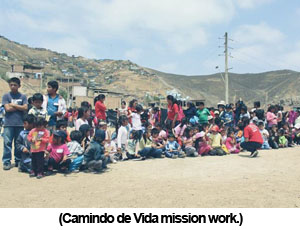 Edify worldwide – www.Edify.org
Edify worldwide – www.Edify.org - Archive: AaronRoth.net – Monthly Newsletters
I moved to Lima, Peru in mid-august to start the Edify program. As you know, over this past year, I had done a feasibility study for Edify in four different Latin-American countries, meeting with 10 different microfinance organizations, visiting almost 70 private schools, and conversing with hundreds of school leaders. Currently Edify works in six countries making small loans to low-cost Christian schools to help them with their construction projects like classrooms and computer labs and provide them business training to improve the school and the quality of education.
 As an organization, we decided to enter Peru based on the like-minded nature of potential Christian microfinance organizations, and the ability to have significant impact with education in an empowering country environment. We wanted to find a country that was safe to do business in, one that was open to the kind of Christian missional work we do in other countries, and one where the economic need was evident. After spending almost two months in Peru in late spring, we felt we had enough information to make the decision on the four countries in the study, and in July, we decided to set up shop in Peru.
As an organization, we decided to enter Peru based on the like-minded nature of potential Christian microfinance organizations, and the ability to have significant impact with education in an empowering country environment. We wanted to find a country that was safe to do business in, one that was open to the kind of Christian missional work we do in other countries, and one where the economic need was evident. After spending almost two months in Peru in late spring, we felt we had enough information to make the decision on the four countries in the study, and in July, we decided to set up shop in Peru.
After spending two years in the Dominican Republic, I felt like I had a good idea of how the Edify program works, and was very excited to open a new country for Edify. Sometimes it feels easy to start something for which you already have a template, and then you realize that bringing this to a new country and a new context requires a lot of patience and a tremendous amount of teamwork to make it happen. It’s interesting to me now to see how missions organizations and non-profits reach 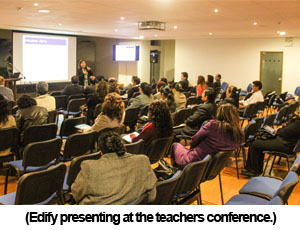 the scale that they do. For example, the largest non-profit in the world, World Vision has 44,500 employees and works in 97 countries. I compare that with setting up this one partnership in Lima, Peru and I think of the monumental work World Vision undertook to reach their current level. I know now first-hand that it takes a lot of introductions, a lot of meetings, phone calls, visits, emails, travel, discussions, contracts, new connections; a whole lot of manual assembly to put the pieces together. That’s been the theme of this past fall: trying to tie it all together.
the scale that they do. For example, the largest non-profit in the world, World Vision has 44,500 employees and works in 97 countries. I compare that with setting up this one partnership in Lima, Peru and I think of the monumental work World Vision undertook to reach their current level. I know now first-hand that it takes a lot of introductions, a lot of meetings, phone calls, visits, emails, travel, discussions, contracts, new connections; a whole lot of manual assembly to put the pieces together. That’s been the theme of this past fall: trying to tie it all together.
It’s been amazing to see how the Lord has been working here Lima, Peru. Early on, I connected with a local Christian organization called “Christian Development of Peru” that offers training and educational resources for Christian schools and pastors throughout Peru. They helped connect me to two different Christian school organizations that in total have 34 schools, and invited us to  participate in their fourth annual teachers conference entitled, “Evaluation and Sustainability for Educational Projects.” On October 29th, we as Edify presented almost three hours of training to leaders from 20 different schools on how to be sustainable as a low-cost Christian school and how to improve local community impact. While we were hoping for closer to 50 schools, it was still a great success to be able to plant our feet here in the community.
participate in their fourth annual teachers conference entitled, “Evaluation and Sustainability for Educational Projects.” On October 29th, we as Edify presented almost three hours of training to leaders from 20 different schools on how to be sustainable as a low-cost Christian school and how to improve local community impact. While we were hoping for closer to 50 schools, it was still a great success to be able to plant our feet here in the community.
We met our facilitator to do our business training through the church I’ve been attending, Camino de Vida, (www.caminodevida.com). I had connected with the pastoral staff and introduced myself and our mission for Peru back in April. As the months progressed, they became instrumental in helping us launch our program here, introducing us to individuals who work in Christian schools, broadcasting, government, and those in the private sector. There is really no other way I would have been able to meet such quality people, without the kindness and hospitality that the Peruvian leaders have shown us over the past few months. As we move closer to doing our first loan here with the  local Microfinance organization, Camino de Vida is waiting to introduce us to even more schools that could benefit from the work of Edify. What a great model for building a new program!
local Microfinance organization, Camino de Vida is waiting to introduce us to even more schools that could benefit from the work of Edify. What a great model for building a new program!
But I’ve been very careful about making personal visits to schools that have invited me to see their school. As you can imagine, it’s incredibly important for the long-term sustainability of our program that we work with local leaders to develop relationships with schools, and second, I don’t want to give off the impression that I’ve come to their school to prepare a huge check for a donation, or am trying to work out the logistics for a big shipment in a few months. That’s not what we do, and indeed, it wouldn’t be good for their overall success. It’s the basic principle of a hand-out or a hand-up. I know they could use any donation, be it monetary or equipment based, but if they keep relying on donations for their operation, they are going to be stuck in that cycle of waiting for the next individual  to walk through the door, and we will soon run out of resources to donate to all the schools we want to work with. It’s important to maintain a consistent message of partnership and sustainability.
to walk through the door, and we will soon run out of resources to donate to all the schools we want to work with. It’s important to maintain a consistent message of partnership and sustainability.
Certainly, one of the worst things I could do is promise something I cannot deliver on. I’ve heard too many stories from school proprietors that told me about Americans who had come to visit two or three years ago, even five or ten years ago, and the people never delivered what they said they were going to do. I remember talking with a friend who spent a few months in Burkina Faso (An economically poor country in West Africa, and a new country for Edify this past year) and he said that “While we all have good intentions to help others, while we may have pure hearts, you have to think about it from their perspective. If you’re the only foreigner they’ve seen and you even hint at  something amazing that they would never in their life be able to afford, they are going to start hoping you’ll deliver, and treating your suggestion as a promise. Don’t break a promise to them.”
something amazing that they would never in their life be able to afford, they are going to start hoping you’ll deliver, and treating your suggestion as a promise. Don’t break a promise to them.”
So as far as our progress is concerned, we’ve been proceeding slowly, patiently, making the right introductions, presentations and building up relationships in the first few months. We want to make sure we do this right. And when we are ready, and when the local organization is ready we’ll be excited to follow-through on what we promised to deliver on. It has been a period of expectation and waiting and a lot of assembly. That’s kind of what this season is about right? Awaiting the promise of something to come. That’s what they were waiting for before Jesus was born 2,000 years ago, and then he arrived in the season prepared for his arrival.
I pray that your Christmas season would be filled with the good and healthy promises, and that you would appreciate family and friends and the arrival of Christ to the world.
Blessings,
-Aaron



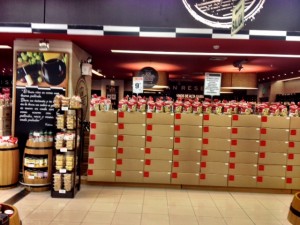

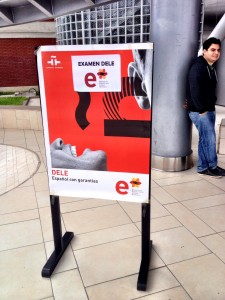
 Then I realized that each Spanish word could be a part of a set of words to describe something. Take for example the word “said” as in “He said he’d be back in 10 min.” We realize that there are a multitude of ways that someone can “say” something in English.
Then I realized that each Spanish word could be a part of a set of words to describe something. Take for example the word “said” as in “He said he’d be back in 10 min.” We realize that there are a multitude of ways that someone can “say” something in English.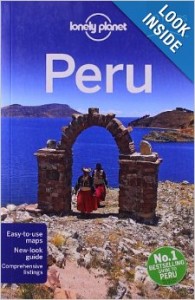

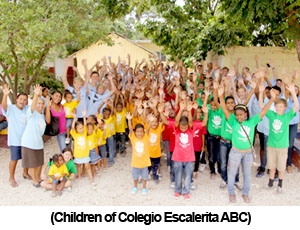 Edify worldwide –
Edify worldwide – 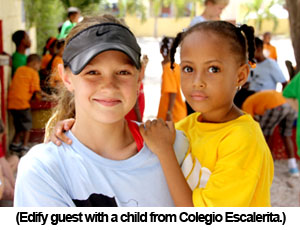 So this past July we spent two weeks in a city in the East of the Dominican Republic called La Romana. Each week we had five different families participate in a four-day camp that involved a work project, English classes, crafts, recreation and a devotional. The final day we had a celebration, like a carnival, where we invited the parents and the siblings of the students. You’re probably very familiar with this description of this kind of camp as it sounds like many short-term mission trips that churches typically do.
So this past July we spent two weeks in a city in the East of the Dominican Republic called La Romana. Each week we had five different families participate in a four-day camp that involved a work project, English classes, crafts, recreation and a devotional. The final day we had a celebration, like a carnival, where we invited the parents and the siblings of the students. You’re probably very familiar with this description of this kind of camp as it sounds like many short-term mission trips that churches typically do.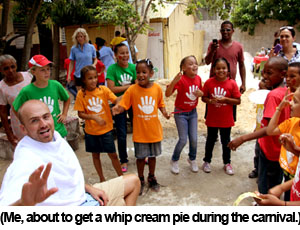
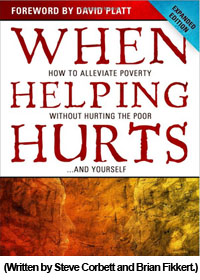 We’re trying to build a program with these schools that doesn’t fade away after the week that the teams leave or the funds dry up. Now, we’re not perfect by any means, but we are trying to do things differently, and we consistently ask our partners and people we serve how we can improve what we do in the communities where we work.
We’re trying to build a program with these schools that doesn’t fade away after the week that the teams leave or the funds dry up. Now, we’re not perfect by any means, but we are trying to do things differently, and we consistently ask our partners and people we serve how we can improve what we do in the communities where we work. r and then onto each sphere of relationships. So when we go into these schools we must treat each other similarly: as broken as we may be, we know that the path out of it is led by our redeemer, Jesus.
r and then onto each sphere of relationships. So when we go into these schools we must treat each other similarly: as broken as we may be, we know that the path out of it is led by our redeemer, Jesus. One of our guests had decided to join the work project during the first week. He and his family have done a lot of work with a missions organization that builds houses for economically poor families in Mexico. He’s pretty good with tools, and has a lot of experience in construction, so it seemed like a natural fit for him to join the Haitian and Dominican workers in building onto the school’s wall during the first week.
One of our guests had decided to join the work project during the first week. He and his family have done a lot of work with a missions organization that builds houses for economically poor families in Mexico. He’s pretty good with tools, and has a lot of experience in construction, so it seemed like a natural fit for him to join the Haitian and Dominican workers in building onto the school’s wall during the first week. this pain, and had found relief. We all crouched there for a few minutes as our guest helped this man breathe through his pain, and gradually the wincing and the moaning stopped. There wasn’t any language spoken in these minutes; it was as if we were all just teammates trying to help our buddy out.
this pain, and had found relief. We all crouched there for a few minutes as our guest helped this man breathe through his pain, and gradually the wincing and the moaning stopped. There wasn’t any language spoken in these minutes; it was as if we were all just teammates trying to help our buddy out.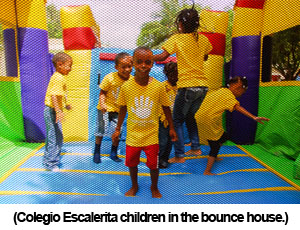 set the bounce house ticket price at five tickets (well below market value). And as many more, almost too many children wanted to go through it, we raised the price to 10 tickets (approximate market value). One young man who had to decide between waiting in line at the free bounce house and playing tic-tac-toe bean bag toss with no line, first chose the bean bag toss to earn tickets. Upon arriving at the entrance to the bounce house, he was told that it now cost five tickets. He left to go earn more tickets and came back with eight. Unfortunately, for him the price had just been raised to 10 tickets.
set the bounce house ticket price at five tickets (well below market value). And as many more, almost too many children wanted to go through it, we raised the price to 10 tickets (approximate market value). One young man who had to decide between waiting in line at the free bounce house and playing tic-tac-toe bean bag toss with no line, first chose the bean bag toss to earn tickets. Upon arriving at the entrance to the bounce house, he was told that it now cost five tickets. He left to go earn more tickets and came back with eight. Unfortunately, for him the price had just been raised to 10 tickets.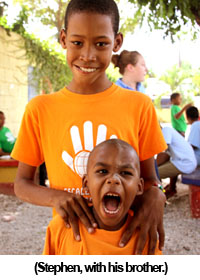
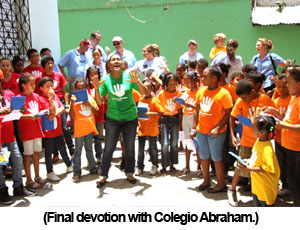 To finish out our final day each week, we had a celebration with the parents of the schoolchildren and friends and family in the neighborhood. We ordered enough food to feed over 200 people during the lunch break. After the big celebration of the games and the tickets during the carnival, it was a time to reflect on just what community means, and what it can mean for people like us, North Americans, and those who live in more economically impoverished areas. We had a really simple message that the director of the school (pictured left) gave us.
To finish out our final day each week, we had a celebration with the parents of the schoolchildren and friends and family in the neighborhood. We ordered enough food to feed over 200 people during the lunch break. After the big celebration of the games and the tickets during the carnival, it was a time to reflect on just what community means, and what it can mean for people like us, North Americans, and those who live in more economically impoverished areas. We had a really simple message that the director of the school (pictured left) gave us.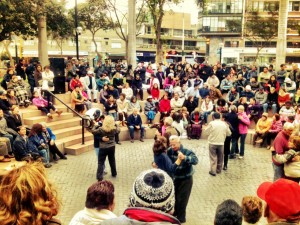
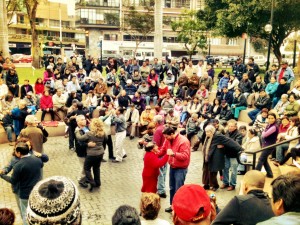

 Edify worldwide –
Edify worldwide – 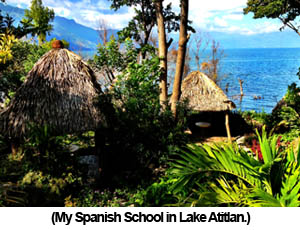 This statement was retold to me by a loan officer of a local Guatemalan Microlending Institution who was teaching rural women about the inequality of gender, and how they should value the female gender and should stand up for the rights of their little girls to attend school and seek educational and vocational opportunities. Inequality still exists in many parts of the world, not just in money or power, but in gender. Very often, when we think of poverty, it’s a description of inequality in economic class, education, or opportunity, but I’ve come to see poverty also as a lack of values or appreciation of life.
This statement was retold to me by a loan officer of a local Guatemalan Microlending Institution who was teaching rural women about the inequality of gender, and how they should value the female gender and should stand up for the rights of their little girls to attend school and seek educational and vocational opportunities. Inequality still exists in many parts of the world, not just in money or power, but in gender. Very often, when we think of poverty, it’s a description of inequality in economic class, education, or opportunity, but I’ve come to see poverty also as a lack of values or appreciation of life. Now keep in mind, even in the tiny rural village where this training took place, culture is a behemoth that everyone can see, but very few can move on their own. It takes years to form itself, and sometimes it sets in like concrete, which means it takes years to reform or change. When any development or missional organization talks about transformation of any sort, be it economical, behavioral, or spiritual, they are entering into a long term process. I’m always hesitant to speak of rapid transformation in the work we do with microlending to schools, because when we try to improve the quality of education, and build on projects to schools, we’re talking about beginning a process for change with a diverse group of individuals who carry their own vision for the school.
Now keep in mind, even in the tiny rural village where this training took place, culture is a behemoth that everyone can see, but very few can move on their own. It takes years to form itself, and sometimes it sets in like concrete, which means it takes years to reform or change. When any development or missional organization talks about transformation of any sort, be it economical, behavioral, or spiritual, they are entering into a long term process. I’m always hesitant to speak of rapid transformation in the work we do with microlending to schools, because when we try to improve the quality of education, and build on projects to schools, we’re talking about beginning a process for change with a diverse group of individuals who carry their own vision for the school. I think it’s better to say that as a development or missional organization from the States we are joining a team with a common goal. When we work together for long-term results, not just short-term projects that look good on powerpoints and photos, real transformation is possible. Real culture change is possible.
I think it’s better to say that as a development or missional organization from the States we are joining a team with a common goal. When we work together for long-term results, not just short-term projects that look good on powerpoints and photos, real transformation is possible. Real culture change is possible.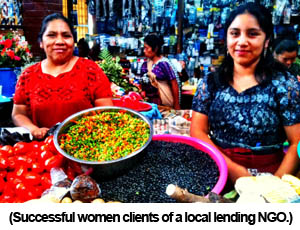 primarily with telling the students that they themselves are valuable. He elaborates:
primarily with telling the students that they themselves are valuable. He elaborates: students in the school value them because they came to help, and because they stayed. They invested in the community, and the community trusts them.
students in the school value them because they came to help, and because they stayed. They invested in the community, and the community trusts them.